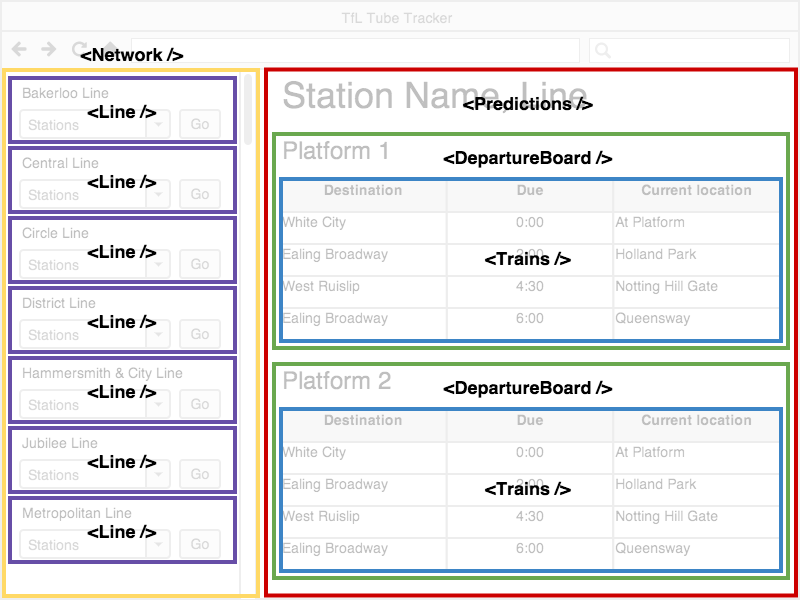#Introduction to ReactJS
##Objectives
- Understand the concepts of React components, props, and state
- Understand the concepts of the virtual DOM and JSX
- Compare and contrast ReactJS to AngularJS
- Create your own React components
##How will you React?
React is a front end JavaScript framework used for creating user interfaces. It was originally engineered by Facebook, and it is now used by Facebook, Instagram, Airbnb, and many other companies.
###But what is it really?
React deals specifically with rendering data as HTML, so it involves a different mode of thinking when compared to Angular. In React, data flows in one direction (no two-way data binding), and data is modularized using components.
Here's an example of how React components would be created and rendered on a page. You'll see that there's a hierarchy where each components can contain additional components. The data is stored by each component, and a render function takes the data and renders it as HTML on the page.
###Terminology We'll Need
####One-Way Data Flow
Data is not bound in both directions in React. Meaning, if we want an input field to update the actual data in a component, we'll need to call a function to modify the value. Compare this to Angular, where we can change the value of an input field bound to ng-model and it'll automatically update the value in the controller.
####Virtual DOM
React uses what's called a virtual DOM. When React renders data to the page, the differences are computed by comparing the page to the virtual DOM. When a component needs to be re-rendered, only the component and its subcomponents are actually rendered. This ideally results in a more efficient rendering process.
####JSX
We keep mentioning data, and how each component is actually just storing data. But how is that data rendered? We'll be using a syntax called JSX to render our components. More to come!
